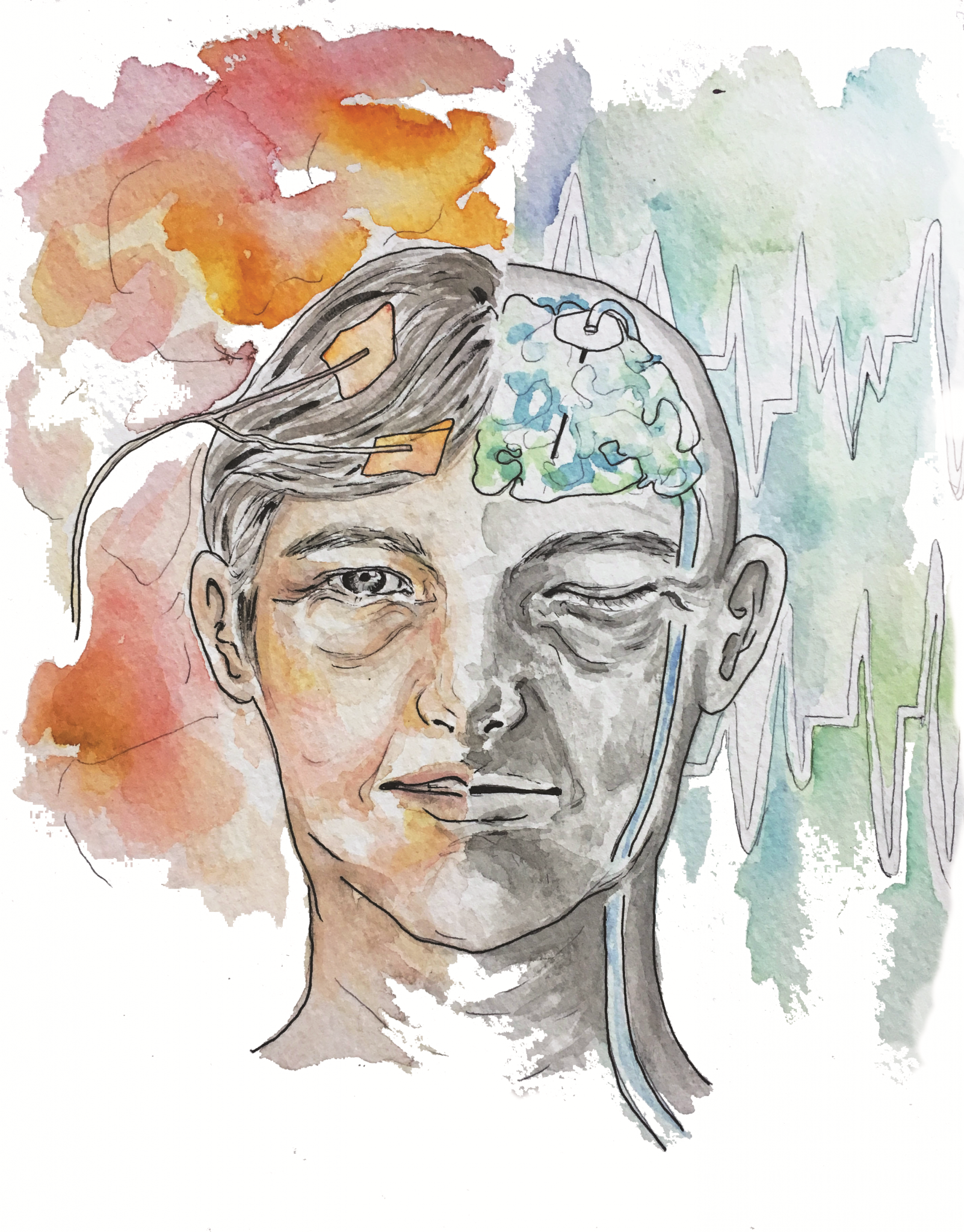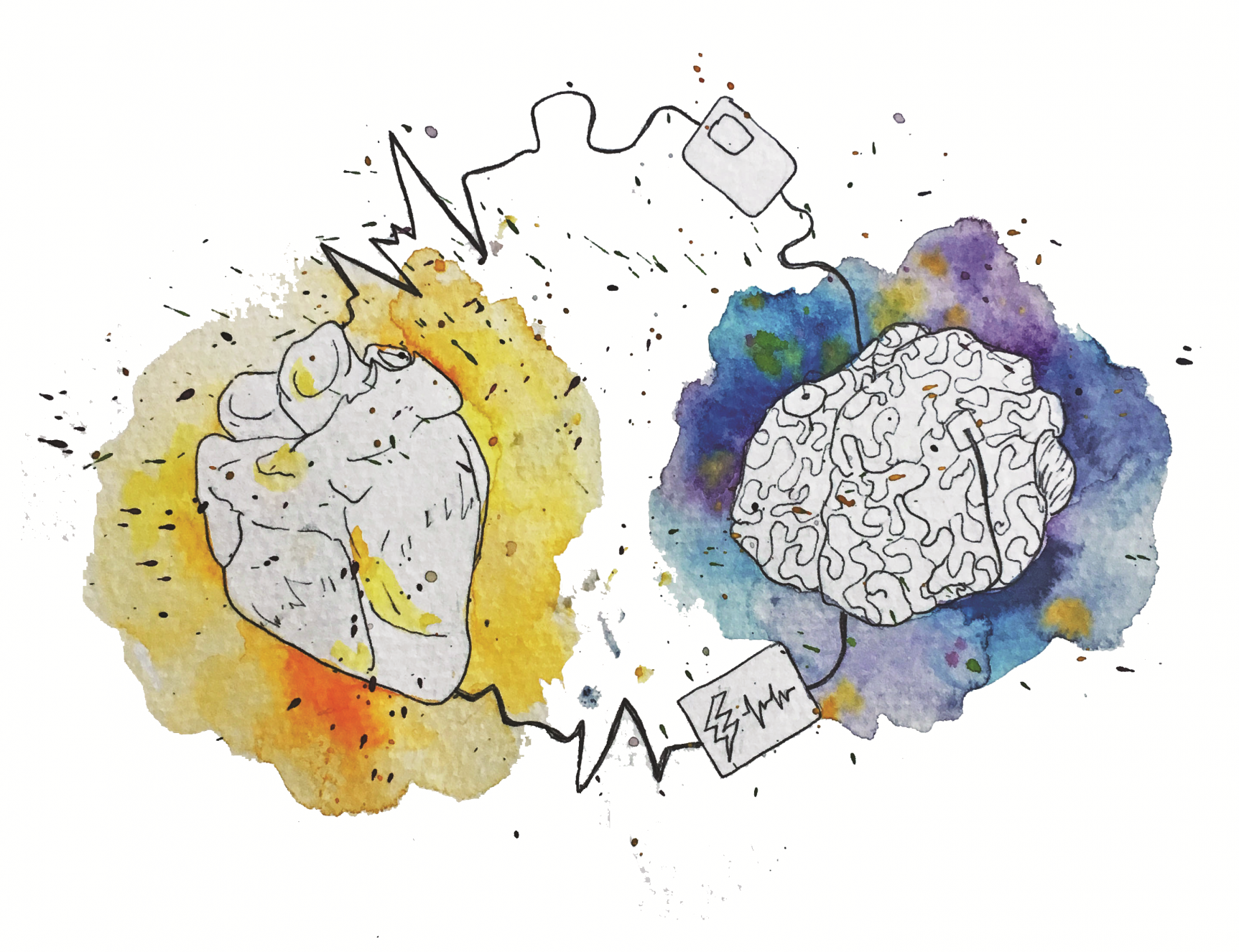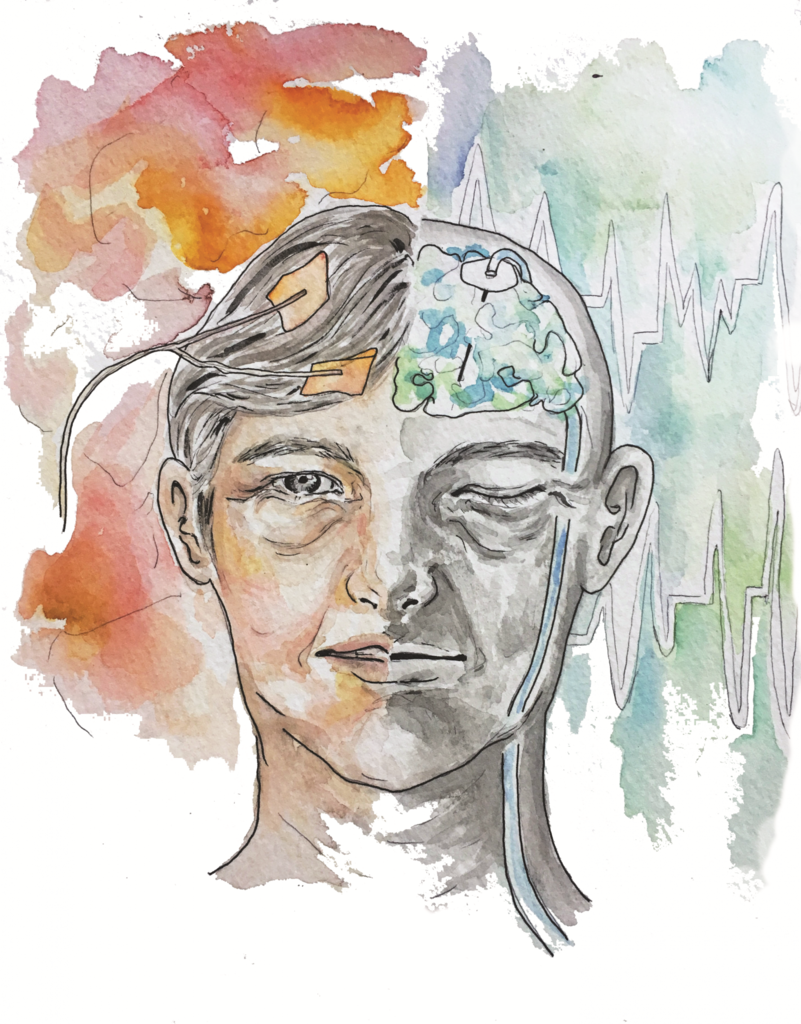One of the most clinically promising treatments for a wide array of neurological conditions is deep brain stimulation (DBS). As its name suggests, this treatment involves the electrical stimulation of deep structures within the brain to minimize patients’ symptoms. While the mechanism behind its therapeutic benefits is not well understood for most conditions, DBS has proved capable of treating a number of diseases, such as Parkinson’s and essential tremor. [1] In addition to its proven applications with movement disorders, DBS is also being tested to assist people with other cognitive conditions like depression, Tourette’s, and OCD.
In spite of its vast potential, widespread adoption of this treatment has proved difficult due to the severity of potential risks. The only practical way to use brain stimulation as a medical treatment is to ensure that only the desired regions of the brain are targeted. If too large a portion of the brain is stimulated, the unintended effects could dwarf the benefits received. Traditionally, the only way to focus the treatment on a specific region of the brain was to surgically implant an electrode directly into that region. The procedure is relatively safe, but any surgery can lead to dangerous complications. Additionally, even if the implantation occurs without issue, there are many non-surgical side effects involving mood and cognitive abilities that are difficult to predict and treat. The necessity for surgery limits the application of DBS by restricting the number of patients eligible for treatment and increasing the difficulty of testing its applicability to new neurological conditions. Fortunately, researchers have developed a new technique that removes the need for surgery, entertaining the possibility of eliminating various problems surrounding DBS implantation. [2] This technique involves introducing an electric field envelope containing a variety of frequencies that interact with each other. Evidence shows that the frequencies will be too high to elicit an effect in superficial cortical structures, while deeper structures will receive signals within stimulatory range, allowing for selective stimulation at targeted structures. Although it has only been tested on mice, this new technique has thus far demonstrated that its capability to stimulate targeted regions of the deep brain is comparable to the traditional method. [2] If the new technique proves to be as clinically effective as the implanted electrode, DBS may be used to treat many more patients, thus substantially improving their quality of life.

Surgical Side Effects
The surgical procedure is relatively non-invasive and does not require the removal of brain tissue, but the potential damage associated with any neural surgery cannot be taken lightly. [3] The implantation is a two-step process performed on a conscious patient who can alert the surgeon to any negative sensations associated with electrode placement. The first step is a physiological exploration of the brain to find the optimal implantation site, while the second step is the implantation of the electrode itself. The most life-threatening complications are likely to occur during the exploration phase because the risk of severe hemorrhaging increases with exploration time. Implantation carries its own dangers as well, introducing the possibility of electrode dislocation or breakage, fluid buildup, skin erosion, and infection. All of this can also occur after the procedure is completed, which may necessitate a second surgery and replacement of the original electrode. One final potential complication is an interference of the electrode by an external electric field. In most cases, this will result in the failure of the device and the sudden reappearance of symptoms, causing major distress to the patient. Unfortunately, in extreme cases the effects can be much worse. In one such case, the device caused multiple severe brain lesions, sending the patient into a vegetative state. [3]
Non-Invasive Technique
The complications detailed above deter many patients from seeking DBS as a treatment, regardless of how much they stand to benefit from it. Fortunately, such considerations may no longer be necessary when evaluating DBS as a treatment option thanks to a new technique that foregoes the need for surgery. [2] The new strategy only requires the placement of a few small devices at different points on the outside of the head. These devices emit an oscillating electric field with a frequency too high to stimulate any neurons on their own. However, when two fields interact, they form a new field with properties different from the original ones. [2]
When testing the new technique on mice, researchers placed the electrodes in such a way as to generate a low frequency in the deep structures of the brain and a high frequency in the outer regions. [2] The result of this interaction was that high frequency signals caused no stimulation in the more superficial brain tissue and low frequency signals caused stimulation in the targeted deep brain structures. To test how well the new technique stimulated targeted brain regions, the expression of the c-fos gene, a common marker for neural activity, was measured following the application of three different electric fields. The first two fields were used to establish a baseline to compare with the field generated by the new technique. Researchers first tested how the brain responds to just the high frequency stimulation without interference from multiple fields. They observed no response, which suggests that the brain does not respond to signals at this frequency. The researchers then tested how the brain responds to a low frequency, using the frequency achieved in their multi-electric field model. They found that the entire brain was stimulated by this low frequency field, implying that this frequency can stimulate neural activity. Finally, the researchers compared these isolated electric fields with their multi-electric field model and found the measured neural activity matched their predictions. There proved to be no significant difference between the stimulation biomarkers found in the deep brain following the application of the uniform low frequency field and the new DBS technique. Similarly, no difference was found between the uniform high frequency field and the new technique in the more superficial regions of the brain. [2]
In addition to demonstrating targeted stimulation of the mouse brain, the researchers also tested the

new technique’s ability to target different regions of the brain. [2] Its repositioning ability was tested by inducing movement in various regions of the mouse, such as the foot and ear. The researchers were able to change the position of stimulation with two methods. The first was to simply reposition the devices emitting the electric fields, and the second involved the adjustment of the electrode’s current. By changing the ratio of the currents without editing their sum, the stimulated region could be moved to an area closer to the electrode with the smaller current. [2]
The new technique is very promising, but it should be noted that it is not without disadvantages. [2] Unfortunately, the non-invasiveness and ease of adjustment granted by the new technique come at the cost of how accurately it can target the desired brain region. When implanted electrodes are used, the boundary between the targeted region and the rest of the brain is more clearly defined. When interacting fields are used, however, the switch between the low frequency at the target region and the high frequency elsewhere is not instantaneous, resulting in a small transition region. Additionally, there are factors not in the initial mouse study that may become relevant in eventual human trials. The size of a mouse brain is many times smaller than that of a human brain; therefore, the electric field used to stimulate the human brain will have to be different than the one used in the initial study. While the fields used in a human study would be similar to the ones in the initial mouse study, they could affect human brain function in ways that have not yet been observed. These issues are important to consider when further exploring the new technique. Hopefully, as more studies are done, improvements can be made to limit these shortcomings. [2]
Side Effects of Stimulation
Potential surgical complications can have severe consequences, but the common side effects of the stimulation itself should not be ignored. Unfortunately, such side effects are difficult to treat due to a lack of information about them, and only a few studies have investigated this. The studies that have been performed have found a pattern of adverse mood and cognitive effects. [4] The most common cognitive effect reported by DBS patients is speech difficulties, which researchers have confirmed, finding a decrease in language ability across patients. The same study also reported negative changes in mood, specifically increased irritability and feelings of sadness, confusion, and anger. [4] In some cases, the mood changes manifested in intense periods of mania. [5] Some studies have also reported an increase in impulsive behaviors like gambling, shopping, and hypersexuality. [6] One hypothesis proposes that these side effects occur because of the electrode stimulating areas in the brain surrounding the targeted region. In one experiment, when different treatment sites were stimulated, researchers found no significant change in side effects, suggesting the effects were caused by stimulation of regions outside of target sites. This finding shows that the cognitive and mood changes were not a result of the intended stimulation. [4] However, it is likely that unintended effects would occur regardless of how accurate the stimulation is, as applying a voltage to any region of the brain is guaranteed to affect neural function in unintended ways.

The new DBS technique will not completely end the side effects associated with stimulation, but it may eventually help reduce them. If the current hypothesis that the treatment’s negative effects are due to unintentional stimulation of areas surrounding the electrode is true, then such effects could be minimized by fine-tuning the placement and intensity of the stimulation. The decreased accuracy of the new technique may increase unwanted stimulation in the surrounding areas, but its ability to reposition might offset that. The effects of unwanted stimulation are unpredictable and cannot be determined until after implantation, when it is too late to adjust the stimulation site. The unpredictability of stimulation side effects and the inability to adjust electrode placement would not be as much of an issue separately, but together they make dealing with such side effects very difficult. If it was known how the electrode affects the surrounding regions, it could be placed in a way to minimize those effects. If the electrode could be moved, the side effects could be reduced through trial and error. Neither of these solutions are feasible with surgical implantation. The new technique’s feature of easily moving the stimulation site allows for the freedom to test different configurations in order to decrease the severity of side effects; however, the lower accuracy and lack of testing on humans makes it difficult to say whether or not it will decrease the prevalence of stimulation side effects. If the new technique’s accuracy is improved in future iterations, it has the potential to drastically reduce unwanted issues associated with deep brain stimulation.
Expanding DBS to New Patients
In addition to improving quality of life for patients currently eligible for treatment, the new technique also has the potential to expand the population of patients that could receive DBS. The criteria used to determine whether or not a patient is fit to undergo the surgical procedure uses three measures: the amount of benefit the patient will receive, the duration of such benefit, and the ability to tolerate the surgery. [7] The benefit received is estimated by studying how well the patient reacts to the medication levodopa, since its effectiveness is correlated with that of DBS. If stimulation is predicted to be effective, the progression of treatment-resistant symptoms is analyzed as well to determine the longevity of the treatment. Most importantly, the prospective patient must be physically, emotionally, and cognitively healthy enough to endure the surgery and the postoperative treatment. Those with cognitive abnormalities may be ineligible because DBS could possibly worsen their conditions. [7] Eliminating the need for surgery will remove and reduce the stringency of many patient qualifications.
The new technique can also assist in studying new applications of DBS. Traditionally, DBS has been used to treat neurological conditions affecting motor control, but in recent years its ability to treat mood, behavioral, and thought disorders has been increasingly investigated. The mechanism underlying deep brain stimulation is unknown. [8] Because of this uncertainty, the process of finding new applications involves extensive testing of various stimulation sites, which is made difficult by the invasiveness of implanting the electrode. [9] The new technique allows for lower risk and better constructed experimentation at many target sites. Hopefully this will aid researchers in better understanding DBS and widening its application to many more disorders.
Conclusion
The new technique has only just begun to be explored, but it has the potential for numerous benefits. If the new DBS method is found to have the same therapeutic benefits as surgically implanted electrodes, it could provide enormous safety and quality of life improvements for patients. The ability to forgo surgery eliminates many life-threatening consequences, and its ease of adjustment can help limit the chronic adverse effects as well. This new method opens DBS to a wide array of new patients who are currently ineligible for surgery or who possess ailments not yet thoroughly tested. Non-invasive deep brain stimulation could provide many important improvements over surgical stimulation and will hopefully help utilize the immense potential of DBS.
- Ondo, W., Jankovic, J., Schwartz, K., Almaguer, M., & Simpson, R. K. (1998). Unilateral thalamic deep brain stimulation for refractory essential tremor and Parkinson’s disease tremor. Neurology, 51, 1063-1069.
- Grossman, N., Bonon, D., Dedic, N., Kodandaramaiah, S., Rudenko, A., Suk, H., Cassara, A., Neufeld, E., Kuster, N., Tsai, L., Pascual-Leone, A., & Boyden, E. (2017). Noninvasive Deep Brain Stimulation via Temporally Interfering Electric Fields. Cell, 169, 1029-1041.
- Hariz, M. (2002). Complications of Deep Brain Stimulation Surgery. Movement Disorders, 17, 162-166.
- Okun, M., Fernandez, H., Wu, S., Kirsch-Darrow, L., Bowers, D., Bova, F., Suelter, M., Jacobson, C., Wang, J., Gordon, C., Zeilman, P., Romrell, J., Martin, P., Ward, H., Rodriguez, & R., Foote, K. (2009). Cognition and Mood in Parkinson’s Disease in Subthalamic Nucleus versus Globus Pallidus Interna Deep Brain Stimulation: The COMPARE Trial. Annals of Neurology, 65, 586-595.
- Herzog, J. , Reiff, J. , Krack, P. , Witt, K. , Schrader, B. , Müller, D. and Deuschl, G. (2003), Manic episode with psychotic symptoms induced by subthalamic nucleus stimulation in a patient with Parkinson’s disease. Mov. Disord., 18: 1382-1384. doi: 10.1002/mds.10530
- Hälbig, T. D., Tse, W. , Frisina, P. G., Baker, B. R., Hollander, E. , Shapiro, H. , Tagliati, M. , Koller, W. C. and Olanow, C. W. (2009), Subthalamic deep brain stimulation and impulse control in Parkinson’s disease. European Journal of Neurology, 16: 493-497. doi: 10.1111/j.1468-1331.2008.02509.x
- Widner, H. & Lang, A. (2002). Deep brain stimulation for Parkinson’s disease: Patient selection and evaluation. Movement Disorders, 17, 94-101.
- Vitek, J. (2002). Mechanisms of Deep Brain Stimulation: Excitation or Inhibition. Movement disorders, 17, 69-72.
- Rabins, P., Appleby, B., & Brandt, J. (2009). Scientific and Ethical Issues Related to Deep Brain Stimulation for Disorders of Mood, Behavior, and Thought. Arch general psychiatry, 66, 931-937.
